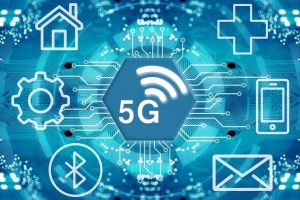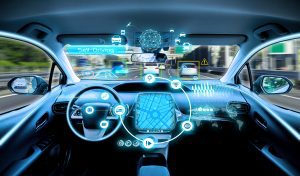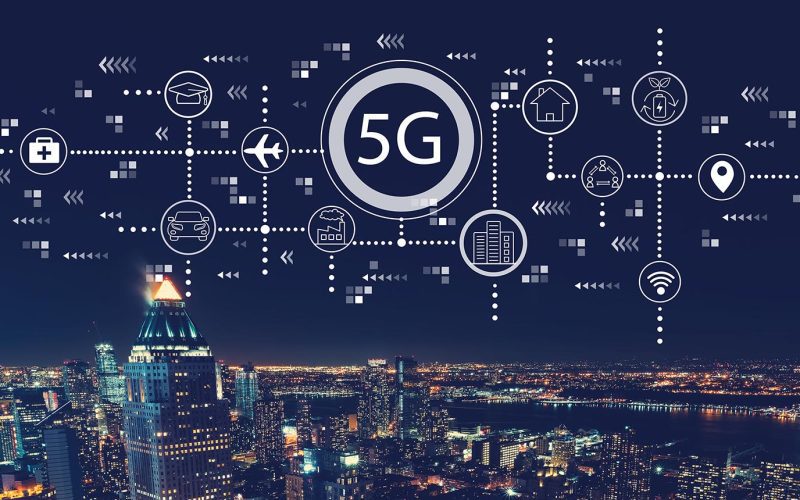As the world shifts towards an increasingly connected environment, the role of 5G technology in transforming industries, societies, and individual lives is becoming more apparent. While 4G networks have enabled significant advancements, 5G represents a leap in terms of speed, connectivity, and data management. When integrated with the Internet of Things (IoT), 5G unlocks new opportunities for connected devices, improving business processes, public safety, and infrastructure.
In this article, we will explore what 5G technology is, its benefits, its key applications for IoT, and real-world examples of how it is already impacting industries. We will also dive into some of the challenges and future outlooks for 5G, examining case studies and how businesses are preparing for this transformative technology.
What is 5G? A Definition for Mobile Technology

5G refers to the fifth-generation wireless technology designed to deliver faster speeds, low latency, and enhanced connectivity. It is the next step in mobile communications, following previous generations like 2G, 3G, and 4G. Unlike its predecessors, 5G is purpose-built not only to enhance mobile broadband for consumers but also to support more complex use cases, especially within the IoT landscape.
Key Features of 5G Technology:
- Low Latency: 5G drastically reduces the time it takes for data to travel between two points, which is crucial for real-time applications like autonomous vehicles or industrial robots.
- High-Speed Connectivity: With speeds up to 100 times faster than 4G, 5G can support data-heavy applications like video streaming, augmented reality (AR), and virtual reality (VR).
- Network Slicing: 5G allows network operators to “slice” the network into different segments, each optimized for a particular use case, offering more control over network performance.
While 4G and LTE networks have proven adequate for many IoT applications, 5G is better suited for scenarios that require ultra-reliable low-latency communications, making it a critical enabler for many IoT technologies.
The Importance of 5G for IoT
IoT refers to the vast network of interconnected devices that collect and share data in real-time. From smart homes to industrial robots, IoT is already playing a significant role in enhancing operational efficiencies and improving business outcomes.
However, as IoT continues to evolve, existing 4G and LTE technologies are reaching their limits. Enter 5G, which can support an enormous number of devices, provide greater bandwidth, and enable real-time data processing. By combining 5G and IoT, industries can revolutionize everything from manufacturing processes to healthcare systems.
Key IoT Use Cases Supported by 5G:
- Autonomous Vehicles: The low-latency communication provided by 5G allows autonomous vehicles to receive data quickly and make real-time decisions to avoid obstacles or interact with other smart systems, such as traffic signals.
- Smart Manufacturing: IoT-enabled sensors and devices in factories can leverage 5G’s speed to gather, process, and react to data almost instantly, resulting in predictive maintenance and real-time quality control.
- Public Safety and Infrastructure: 5G can support critical communication needs in public safety scenarios, allowing authorities to monitor and react to environmental conditions, traffic incidents, or emergencies in real-time.
Benefits of 5G for IoT
-
Ultra-Fast Data Transmission
5G technology is designed to transmit data at speeds up to 10 Gbps, allowing IoT devices to communicate more quickly and efficiently. This enables a new generation of connected devices that require rapid data processing, such as delivery drones and automated guided vehicles (AGVs).
Example: In logistics, AGVs used in warehouses can rely on 5G for seamless navigation, coordination, and delivery of goods in real time, reducing human intervention and increasing operational efficiency.
-
Improved Reliability and Latency
One of the most critical advantages of 5G is its low latency, which means near-instantaneous communication between devices. This is particularly important in industries like healthcare, where precision and timing are critical.
Example: In surgery, robots guided by surgeons can rely on 5G for real-time control, ensuring that there is no delay between the surgeon’s actions and the robot’s response.
-
Massive IoT Deployments
5G enables massive machine-type communications, supporting the connection of billions of IoT devices, from sensors in smart homes to large-scale industrial IoT systems. The technology supports these devices with low-power, long-battery-life solutions.
Example: Smart cities can deploy IoT sensors to monitor air quality, water levels, and traffic congestion. These sensors send small amounts of data, but the widespread deployment of such devices requires a network like 5G that can handle large-scale connectivity without overwhelming the system.
-
Energy Efficiency
5G technology improves energy-saving functions for IoT devices, especially those used indoors. This is crucial for devices that are hard to reach and need to function for extended periods, such as sensors in remote areas or underground.
Example: Water management systems in smart cities can use 5G-connected sensors to monitor water pipelines. These sensors can operate for more than 10 years on a single battery due to the energy-efficient capabilities of 5G.
Case Studies: 5G Transforming IoT Applications
1. 5G in Smart Manufacturing
A well-known automotive company recently implemented 5G technology in its manufacturing plants. By connecting its IoT-enabled machines, robots, and sensors to a 5G network, the company could carry out real-time monitoring and predictive maintenance. This helped reduce production downtime by 30%, saving millions of dollars in operational costs annually.
Impact: 5G’s low latency and high-speed connectivity enabled real-time analytics on the factory floor, leading to improved product quality and reduced waste. Robots on the production line could make quick decisions based on live data, enhancing the efficiency of the entire manufacturing process.
2. 5G and Autonomous Vehicles

Several cities in the United States and Europe have piloted 5G-enabled autonomous vehicle programs to improve traffic management and safety. For example, in Las Vegas, autonomous shuttles are connected via 5G to ensure real-time communication with traffic lights, pedestrians, and other vehicles.
Impact: The combination of 5G and IoT sensors has made it possible to gather massive amounts of data and process it instantly, allowing autonomous vehicles to navigate safely and avoid accidents.
Challenges and Future Outlook of 5G for IoT
While 5G offers numerous benefits, it also faces challenges. The rollout of 5G networks requires significant infrastructure investment, particularly in rural areas. Additionally, compatibility with existing technologies like 4G will need to be maintained, which means both networks will coexist for years to come.
Dynamic Spectrum Sharing
Dynamic Spectrum Sharing (DSS) is one solution to this challenge, allowing service providers to offer both 4G and 5G services on the same radio frequencies. This ensures that devices that are not yet 5G-ready can still function smoothly, providing a seamless transition between generations.
5G RedCap: The Future of IoT Connectivity
One of the latest advancements in cellular technology within the IoT landscape is 5G RedCap (Reduced Capability). It is designed to balance the need for high-speed 5G capabilities with the requirements of IoT devices that don’t demand high throughput but still need reliable, low-power connectivity.
Example: 5G RedCap for Smart Agriculture
In smart agriculture, sensors used to monitor soil moisture levels, livestock health, and crop conditions don’t need massive data throughput, but they require long battery life and widespread coverage. 5G RedCap meets these needs, providing energy-efficient, reliable coverage even in remote areas where 4G may not reach.
How 5G Opens Up New Opportunities for IoT
5G is designed to support a broad range of deployment scenarios and use cases, offering greater flexibility than previous generations. Complementary technologies, like Network Edge Computing, take this even further by allowing IoT applications to process data close to the source instead of in centralized cloud centers. This reduces latency even further and ensures faster decision-making.
5G and Industry 4.0
Industry 4.0, or the fourth industrial revolution, relies heavily on IoT devices for automation, data analytics, and machine learning. With 5G, smart factories can enhance production processes, gather real-time data, and make intelligent decisions without human intervention.
Example: In pharmaceutical manufacturing, where precision and cleanliness are essential, 5G-connected robots can handle tasks that require speed and accuracy, reducing human involvement and minimizing the risk of contamination.
Final Thought
As 5G continues to roll out worldwide, its full potential for IoT is yet to be realized. In the coming years, we will see the widespread adoption of 5G in smart cities, healthcare, automotive, and industrial sectors, transforming how businesses operate and societies function. The ultra-fast, low-latency nature of 5G combined with the massive growth of IoT will open up new possibilities for industries looking to enhance efficiency, improve products, and develop new business models.












